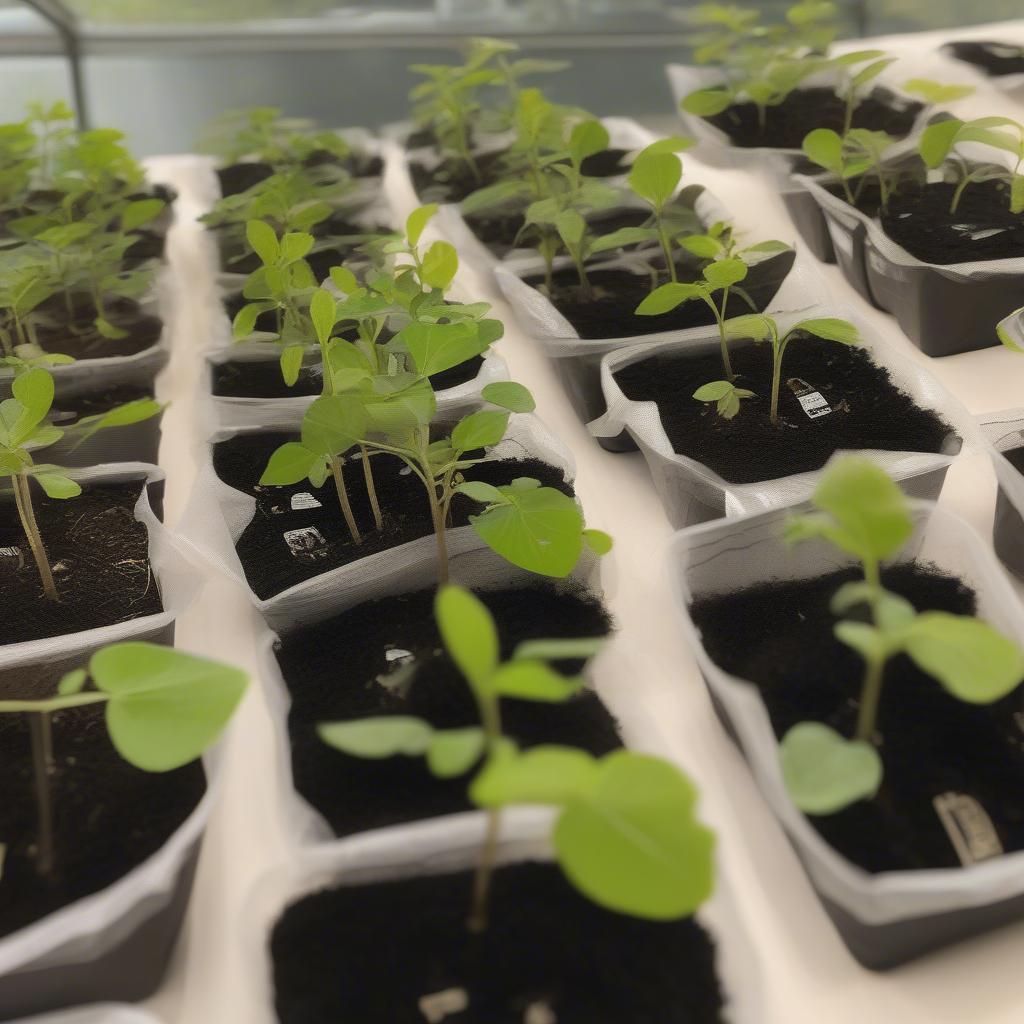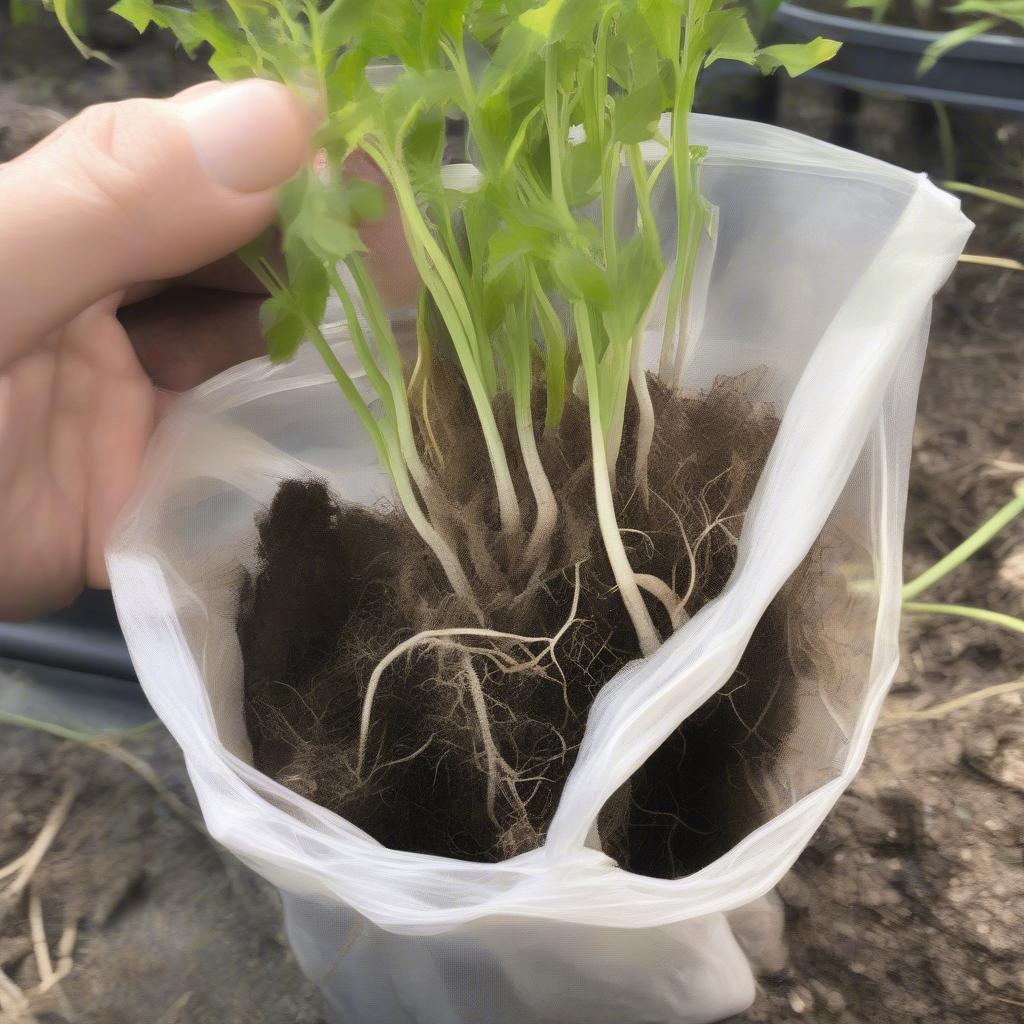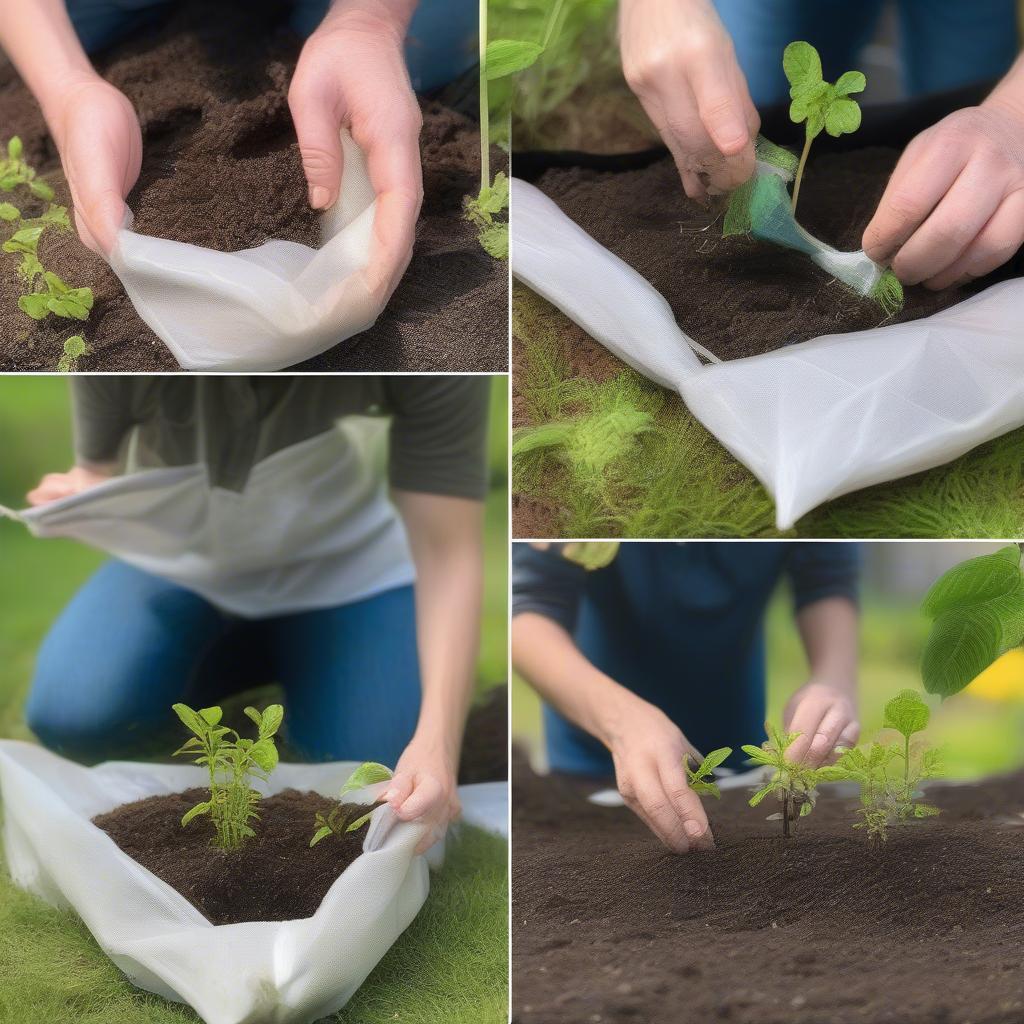Woven Bag
Non-Woven Nursery Bags: Do They Really Work for Seedlings?
Non-woven nursery bags are becoming increasingly popular for seedling propagation, but do they live up to the hype? This article dives deep into the world of non-woven fabric grow bags, exploring their effectiveness, benefits, drawbacks, and comparing them to traditional seedling containers. We’ll help you determine if these bags are the right choice for your gardening needs.
Understanding Non-Woven Nursery Bags
Non-woven nursery bags are made from a synthetic fabric, often polypropylene, which is bonded together using heat, chemicals, or mechanical methods. This creates a porous material that allows for excellent air and water drainage, promoting healthy root development. Unlike plastic pots, these bags allow roots to “air prune,” preventing circling and promoting a more fibrous root system.
 Seedlings thriving in non-woven nursery bags
Seedlings thriving in non-woven nursery bags
Advantages of Using Non-Woven Nursery Bags for Seedlings
These bags offer several benefits over traditional plastic pots:
- Improved Root Development: The porous fabric promotes air pruning, resulting in a dense, fibrous root system that absorbs nutrients and water more efficiently.
- Better Drainage and Aeration: Excess water drains easily, preventing root rot and promoting healthy oxygen flow to the roots.
- Temperature Regulation: The fabric helps insulate the roots from extreme temperature fluctuations.
- Lightweight and Portable: Easy to move and handle, making transplanting less stressful for seedlings.
- Durable and Reusable: With proper care, these bags can last for multiple growing seasons.
- Space-Saving: They can be easily stacked or folded when not in use.
Disadvantages of Non-Woven Nursery Bags
While there are many advantages, it’s important to be aware of potential drawbacks:
- Drying Out Quickly: The porous nature of the fabric means they can dry out faster than plastic pots, requiring more frequent watering.
- Less Durable Than Plastic: While reusable, they are not as sturdy as plastic pots and can be susceptible to tearing.
- UV Degradation: Prolonged exposure to sunlight can weaken the fabric over time.
 Comparison of seedling roots in plastic vs. non-woven bags
Comparison of seedling roots in plastic vs. non-woven bags
Do Non-Woven Nursery Bags Seedling Really Work?
The short answer is yes! Non-woven nursery bags are a highly effective option for growing seedlings. Their benefits, particularly in terms of root development, make them a worthwhile investment for gardeners of all levels. However, it’s important to be mindful of their limitations and adjust watering practices accordingly.
Non-Woven Nursery Bags vs. Traditional Pots
Choosing the right container depends on individual needs and preferences. While non-woven bags offer superior root development and drainage, plastic pots are more durable and retain moisture longer.
| Feature | Non-Woven Bags | Plastic Pots |
|---|---|---|
| Root Development | Excellent (air pruning) | Can lead to circling roots |
| Drainage | Excellent | Good |
| Durability | Moderate | High |
| Cost | Moderate | Low |
| Reusability | Moderate | High |
Tips for Using Non-Woven Nursery Bags
- Watering: Monitor moisture levels closely and water more frequently than plastic pots.
- Sunlight: Provide adequate sunlight, but avoid prolonged exposure to intense UV rays.
- Fertilizing: Use a balanced liquid fertilizer to ensure proper nutrient uptake.
- Transplanting: Gently remove the bag or plant directly into the ground – the fabric is biodegradable in some cases.
 Transplanting seedlings from non-woven bags into the ground.
Transplanting seedlings from non-woven bags into the ground.
Conclusion
Non-woven nursery bags offer a compelling alternative to traditional seedling containers. While they require slightly more attention to watering, the benefits of improved root development and aeration can significantly enhance plant growth and overall health. Consider giving non-woven nursery bags a try for your next seedling project.
FAQ
- What are non-woven nursery bags made of? Typically polypropylene, a synthetic fabric.
- Are non-woven nursery bags biodegradable? Some are, check the manufacturer’s information.
- How often should I water seedlings in non-woven bags? More frequently than plastic pots, as they dry out faster.
- Can I reuse non-woven nursery bags? Yes, with proper care.
- What size non-woven nursery bags should I use for seedlings? Choose a size appropriate for the plant’s mature size.
- Are non-woven nursery bags good for all types of seedlings? Most seedlings benefit from the improved aeration and drainage.
- Where can I buy non-woven nursery bags? Garden centers, online retailers, and nurseries.
Need more help? Check out our articles on choosing the right potting mix and transplanting seedlings.
Call us for support: +84 388 951 999 (Hanoi, Vietnam) or visit us at Tech Avenue, Suite 12, San Francisco, CA 94105, USA. We offer 24/7 customer service.
